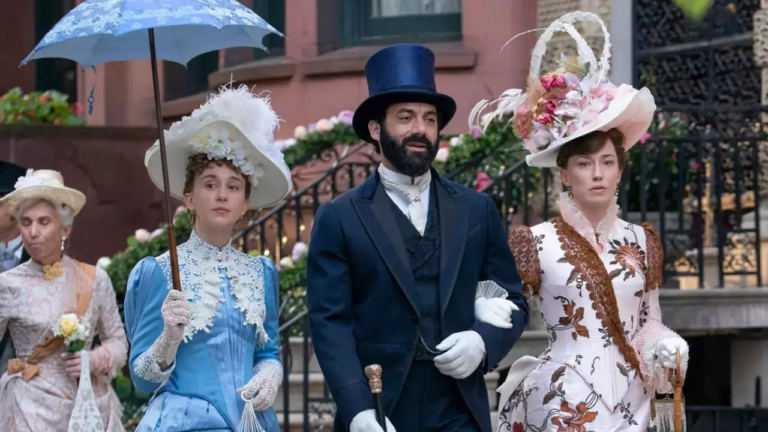
Introduction:
In the late 19th century, a period marked by unprecedented economic growth and ostentatious displays of wealth, the United States experienced the Gilded Age. This era, aptly named for its superficial glitter concealing underlying societal issues, witnessed a profound influence on fashion. The garments of the Gilded Age reflected the opulence and extravagance of the elite class, leaving an indelible mark on the history of fashion.
The Opulent Palette:
Gilded Age fashion was characterized by an opulent palette that mirrored the affluence of the era. Rich jewel tones such as emerald green, sapphire blue, and ruby red dominated the wardrobes of the privileged class. The fabrics used were equally sumptuous, with silk, satin, and velvet being favored for their luxurious textures.
Elaborate Embellishments:
In a society where excess was celebrated, Gilded Age fashion was defined by its elaborate embellishments. Dresses were adorned with intricate beadwork, lace, and embroidery, showcasing the wealth and social status of the wearer. The bodices of women’s gowns were often fitted with corsets, emphasizing an hourglass silhouette that was considered the epitome of feminine beauty during this time.
Men’s Fashion:
Gentlemen of the Gilded Age were no strangers to sartorial splendor. Tailored suits made from fine wool and silk became the hallmark of men’s fashion. These suits featured high collars, waistcoats, and often, pocket watches dangling from gold chains. The well-dressed man of the Gilded Age was a symbol of prosperity and refinement.
The Rise of Department Stores:
The Gilded Age saw the rise of department stores, such as Macy’s and Marshall Field’s, which played a pivotal role in shaping fashion trends. These emporiums offered a wide array of ready-made clothing and accessories, making fashionable attire more accessible to the burgeoning middle class.
Gilded Age Icons:
Prominent figures of the Gilded Age, including the legendary socialite and fashion icon Mrs. Caroline Astor, influenced fashion trends. Mrs. Astor’s lavish wardrobe set the standard for high society, and her extravagant soirées became showcases for the latest fashions.
Legacy and Impact:
While the Gilded Age was marked by excess and inequality, its impact on fashion has endured. The lavish styles and extravagant details continue to influence contemporary designs, with modern fashion often paying homage to the opulence of this bygone era.
Conclusion:
The Gilded Age was a time of unparalleled wealth and excess, and its fashion was a testament to the extravagance of the era’s elite. The opulent palette, elaborate embellishments, and iconic figures of this period have left an indelible mark on the history of fashion. As we look back at the glamorous threads of wealth that defined the Gilded Age, we gain insight into a bygone era where fashion was not merely a reflection of personal style but also a statement of social status and prosperity.